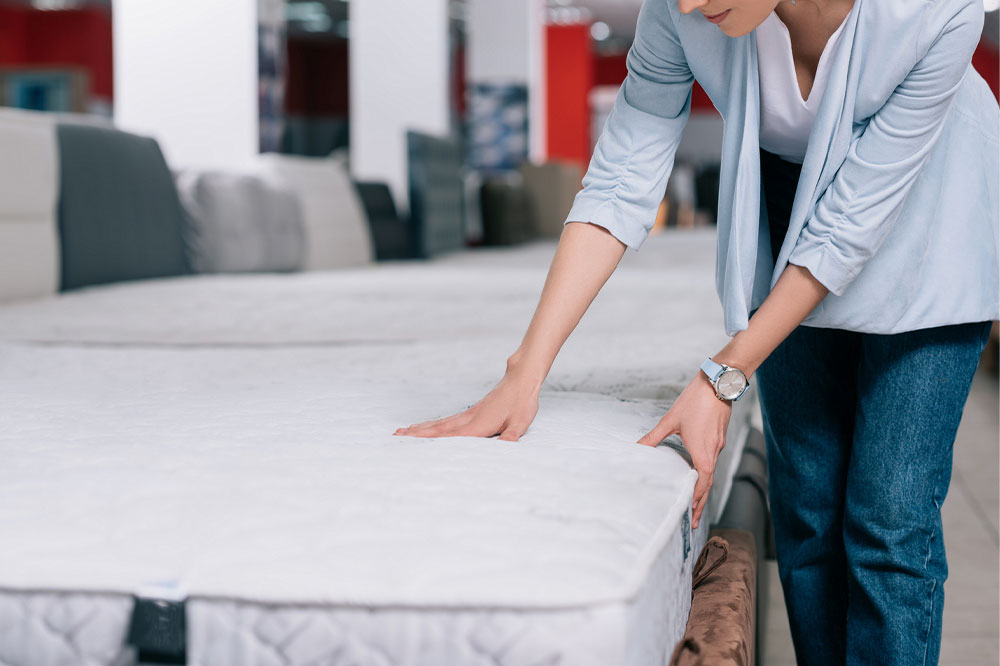Things to Consider Before Purchasing a Mattress

Shopping for a mattress is an essential and supremely underrated purchase. Hence, it deserves a fair amount of thought beforehand. You must conduct adequate research and consider multiple factors before shopping for a mattress. A good bed helps you enjoy a good night’s sleep and is also essential for your body’s health in the long run. Read further to learn about factors to consider while buying a bed for your home.
Know about the different mattress materials
Before shopping for a mattress, you must be well-versed with the prevalent mattress types and their construction. Here are a few popular ones:
- Memory foam beds contour to your body, resulting in pressure relief.
- Air mattresses utilize an air pump for inflating the mattress and offering the necessary firmness level. Typically every bedside employs a separate air chamber that accommodates two side sleepers with varying preferences.
- Innerspring mattresses employ coils that offer solid support and a traditional bounce.
- Latex mattresses offer better responsiveness and bounce than the innerspring mattress and help you sleep cooler.
- Hybrid mattresses are an amalgam between the latex or the memory foam layers inside the innerspring mattress; hence they offer an excellent blend of support and softness.
Beyond this, you may also find mattresses rated on their firmness level. For example, an old or soft mattress might not be best for people with spine issues.
Firmness level
The mattresses are classified as firm, medium-firm, medium, or soft. The medium-firm or medium beds are the most popular as they can cater to various needs. So, when deciding the firmness level, you must consider your body type and sleep position.
- Body type
- Lightweight sleepers
- If you have a smaller bed frame, consider opting for a softer mattress, as it will not exert heavy pressure on the bed. But, if the bed is too firm, it will not sink in well to relieve pressure on the joints.
- Heavier body mass
- A firmer mattress is ideal as one tends to exert more pressure on the bed. Too much pressure can result in the bed sinking in, affecting the spine alignment and sometimes back pain.
- Sleep position
- Back sleepers – Medium firmness would be the best choice in this case. However, the alignment may be disturbed if the bed is too firm or soft.
- Side sleepers – This would be the most preferred, doctor-recommended sleep position to keep back pain at bay. As a side sleeper, you can consider mattresses with soft to medium firmness levels for better spine alignment. But, if it is firmer than usual, you will exert massive pressure on the shoulders and hips.
- Stomach sleepers – A firmer mattress is ideal for stomach sleepers because they do not want their pressure points to sink in too deep while in this position.
- Combination sleepers – One can opt for medium firmness beds to cater to the different sleeping positions at night. Consider your body mass and sleep position when picking the mattress’s firmness.
Size
Before starting with mattress shopping, one must check the dimensions to ensure that what you pick will fit in the available room space without compromising comfort. Normally, you will find six mattress sizes to pick from. These include Queen (60 x 80 inches), King (76 x 80 inches), Twin (38 x 75 inches), California 72 x 84 inches), Full (54 x 75 inches), and Twin XL (38 x 80 inches).
Focus on comfort
Firstly, you must ensure that the mattress you choose is comfortable. You may shop for the most expensive bed in the market, but it will do you no good if it is uncomfortable or does not assure the best sleeping experience. You can find mattresses in all comfort levels, from personalized to contoured, plush, firm, and pillow tops. You can try different mattresses and pick ones that give you maximum comfort. Usually, stores allow customers to lie on the bed and assess their comfort levels so they can easily make a purchasing decision.
Consider your budget
A mattress is an investment towards your health and a good night’s sleep, and you get what you pay for. Mattresses from hundreds of brands are currently available in the market. Thus, there is a bed for every budget.
- Budget- You can find beds priced below $600 after discounts from brands like Casper and Allswell. They will last for years, and one can find one that offers maximum comfort and support at a pocket-friendly price.
- Average- Most quality beds in this category fall between $600 and $1200. You can find mattresses from brands like Purple, Casper, and Leesa.
- Affordable luxury- Costing between $1200 and $1600, these beds have additional features like dual-layer innerspring, extra support, and an active cooling cover. Hence, they give you good value for money.
- Luxury- Costing $1600 and above, such beds are stacked with several support and comfort layers. They are thick and come with several features you do not find in typical mattresses.
Trial window
Your mattress might look and feel perfect in the first go, but there is no assurance that you will feel the same way when you sleep all night on it. Therefore, when shopping for a bed, inquire the store if they have a minimum 30-day trial period. Thus, even if you dislike the bed after testing, you can return it without any added cost. Remember to ask about the exchange fee or the restocking cost. Some brands assure a comfort guarantee that allows customers to exchange or return mattresses within the stipulated time frame. But, it is always advised to inquire about possible costs attached.
Warranty
The mattress must have a decent warranty (at least a decade). But before making the purchase, ask about the aspects covered in the warranty. Typically, the warranties only include the damages resulting from manufacturing errors, which become noticeable only a few months after the purchase.